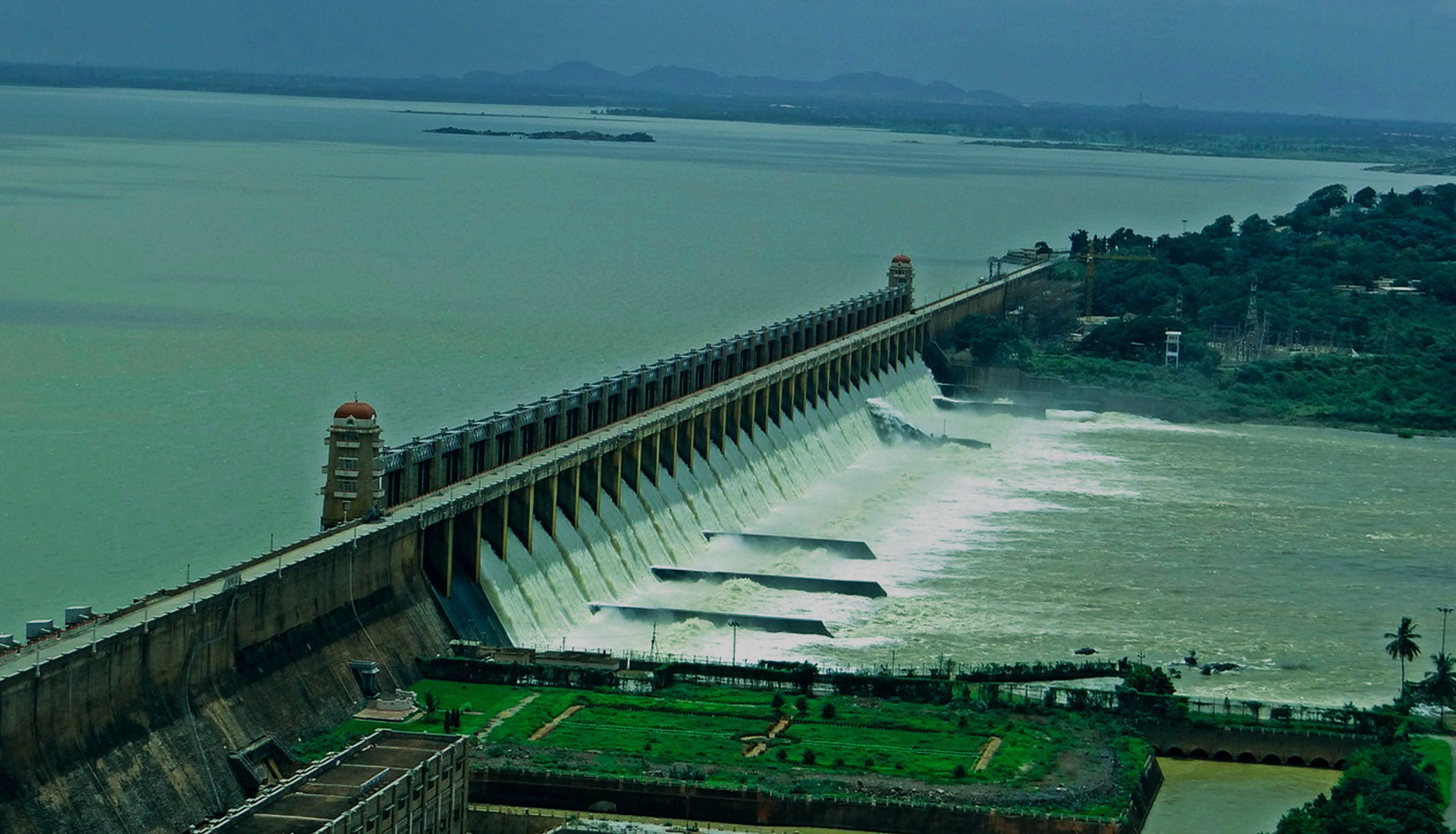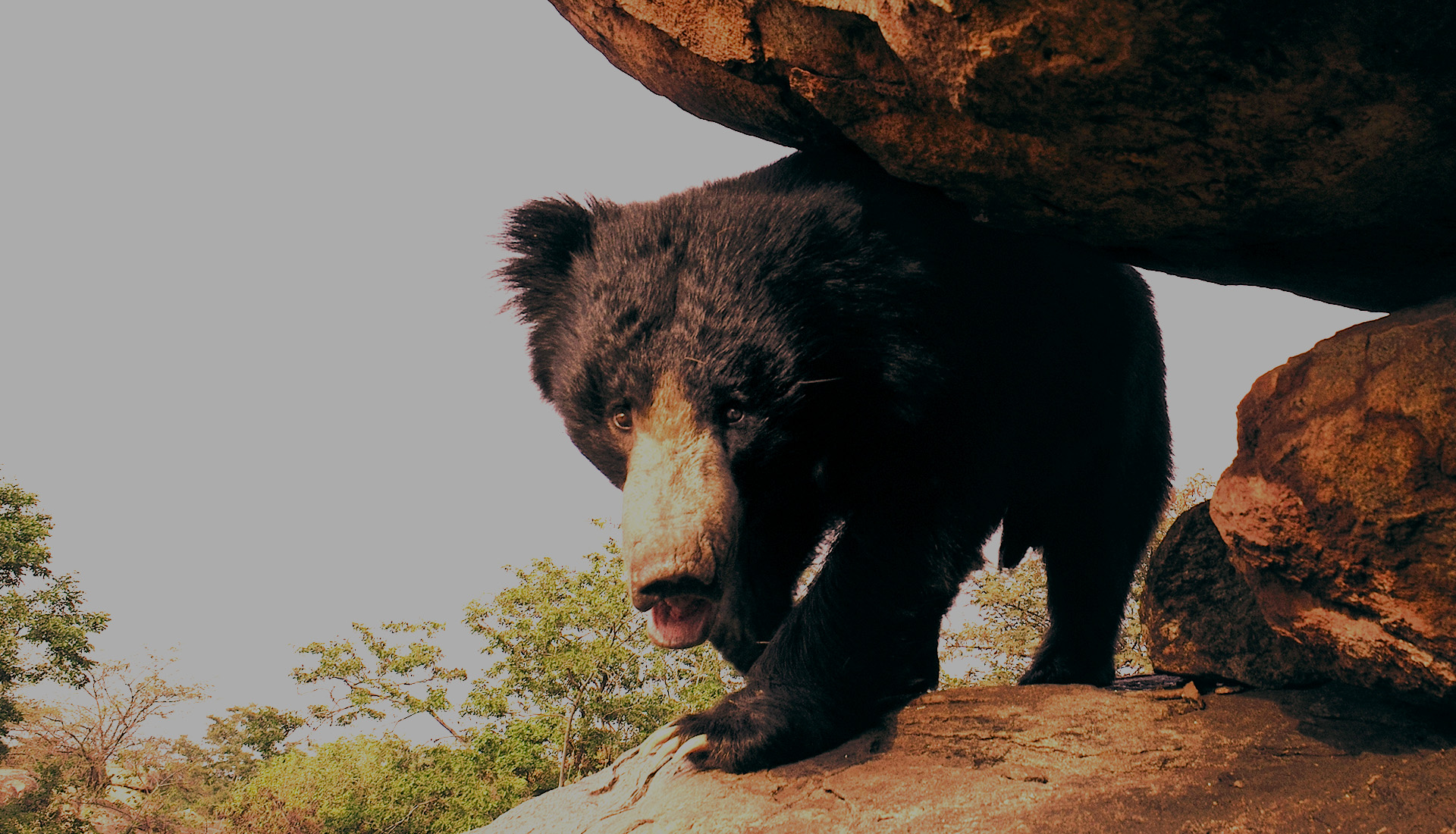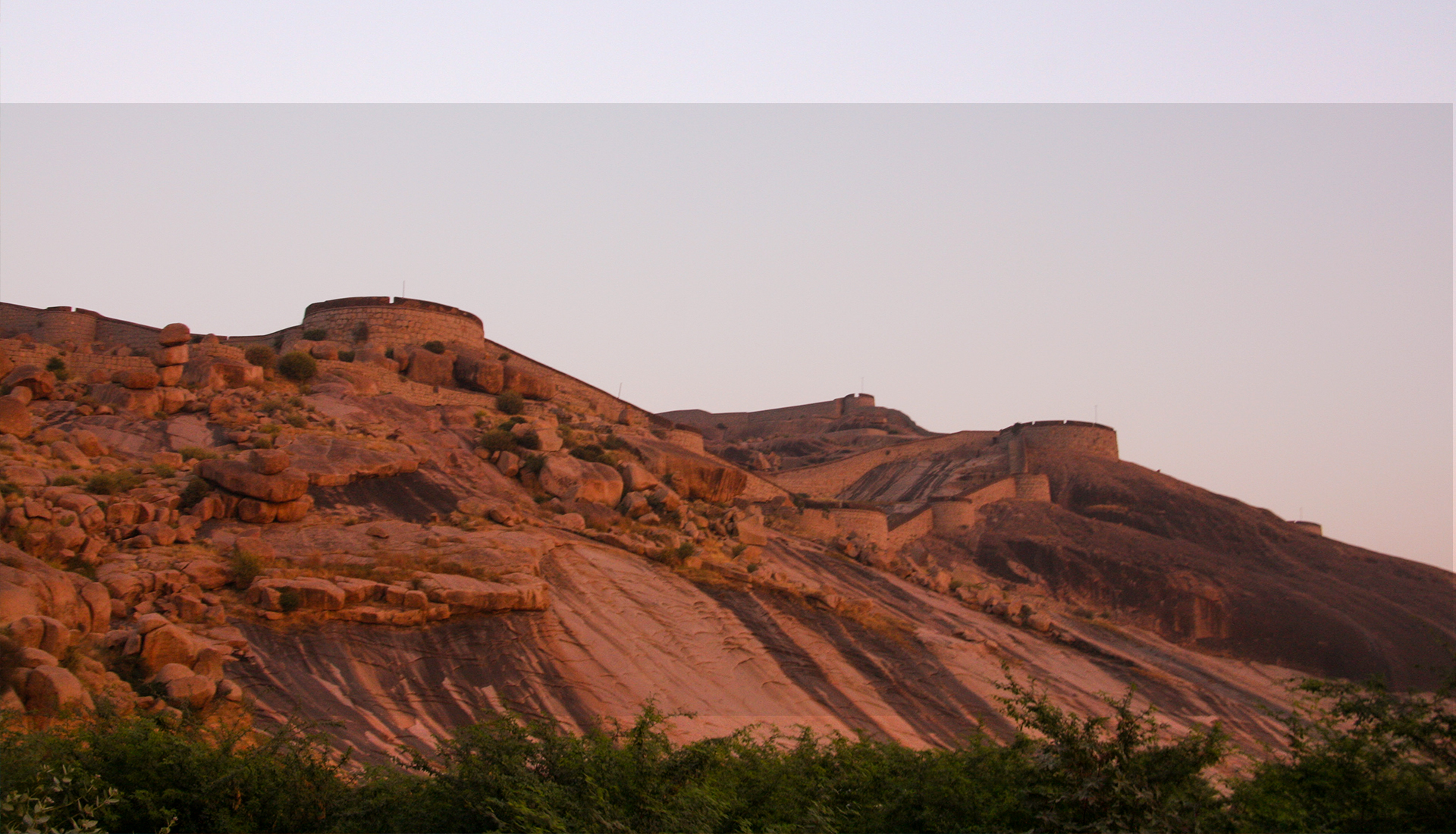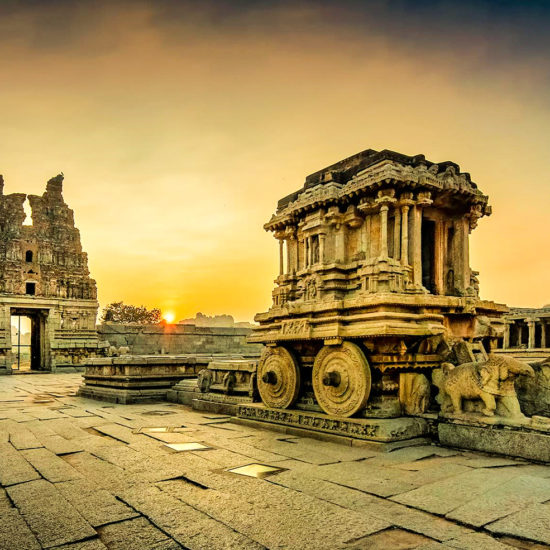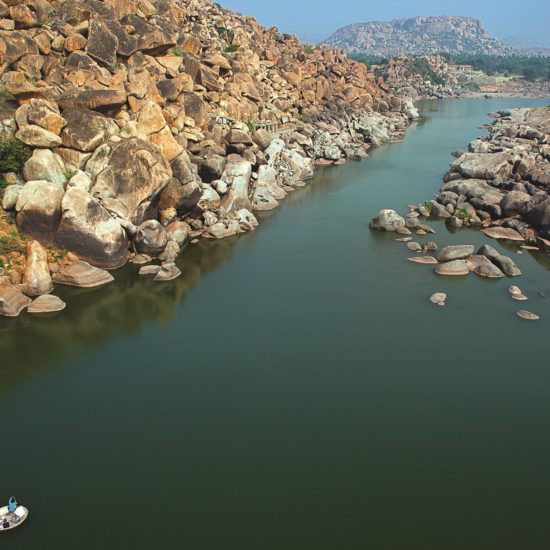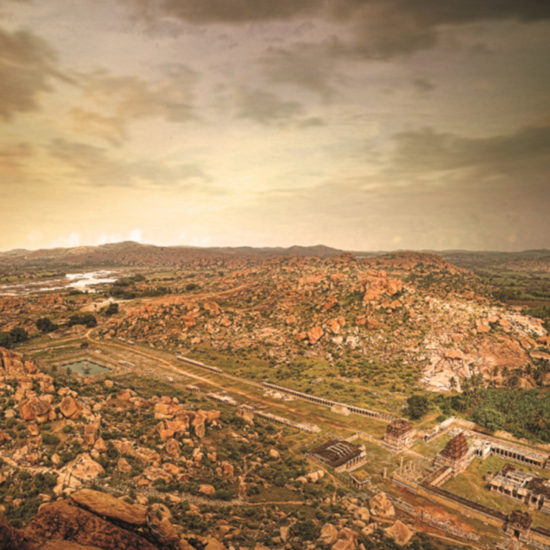The newest and the 31st District in Karnataka state carved out of Ballari District in 2020 is located in the Kalyana Karnataka Region with Hosapete as district headquarters. It is the home of the former capital of the famous Vijayanagara Empire and its capital Hampi, which is one of the UNESCO World Heritage Sites.
The Vijayanagara Empire, from 1336 onwards, was based in the Deccan, in peninsular and southern India. It was founded by Harihara, also known as Hakka, and his brother Bukka Raya. It is named after its capital city (now ruined) of Vijayanagara, in modern Karnataka, India. It lasted from about 1336 to perhaps about 1660, though throughout its last century it was in a slow decline due to a massive and catastrophic defeat at the hands of an alliance of the sultanates, and the capital was taken and brutally razed and looted.
In the following two centuries, the Vijayanagara Empire dominated all of southern India, and was probably stronger than any other power in the Indian subcontinent. The empire during that period served as a bulwark against invasion from the Turkic Sultanates of the Indo-Gangetic Plain; and remained in constant competition and conflict with the five Deccan Sultanates that established themselves in the Deccan to the north of it. It remained a land power. In about 1510, Goa, which had been under the rule of the Sultan of Bijapur, was captured by the Portuguese, possibly with the approval or connivance of Vijayanagara. Commerce between the Portuguese and Vijayanagara became very important to both sides. The empire is generally considered to have reached its peak during the rule of Krishna Deva Raya. Krishna conquered or subjugated territories on the east of the Deccan that belonged previously to Orissa. Many of the great monuments of the empire date from his time. Among these are the Hazara Rama temple, the Krishna temple and the Ugra Narasimha idol, all at Vijayanagara. He was followed by Achyuta Raya in 1530. In 1542, Achyuta was succeeded by Sada Siva Raya. But the real power lay with Rama (of the third dynasty), who seems to have made a point of unnecessarily provoking the Deccan sultanates, so that eventually they allied against him. In 1565, at the Battle of Talikota, the army of Vijayanagara was routed by an alliance of the Deccan sultanates. Rama Raya was killed in the Battle of Tallikot and his head (the real head) annually covered with oil and red pigment has been exhibited to the pious Mahomedans of Ahmudnuggur till 1829. With this, the last significant Hindu kingdom in the Deccan came to an end. Tirumala Raya the sole survivor left Vijayanagara with treasure on back of 550 elephants to Penukonda.
Vijayanagara is considered by many today, especially in the state of Andhra Pradesh, to have been a golden age of culture and learning.
For further information, visit the official district website click here!
Fast Facts
When to go: The monsoon (July-September) and winter (November-February).
Catch the 3-day Hampi Fest in November. In Jan-Feb check out the legendary Virupaksha Temple Car Festival and the annual Purandaradasa Aradhana Music Festival at Vithala.
Temple
Tourist Office:
Office Of The Deputy Director
Department of Tourism
Near Lotus Mahal, Kamalapura, Hospet
Cell: +91-9880-404150″
Heritage Sites
- Hampi: Set in an awesome boulder-strewn landscape along the banks of the Tungabhadra River, Hampi was the capital city of the magnificent capital of the mighty Vijayanagara Empire. Founded by Harihara and Bukka in 1336, it fell to the Muslim rulers of the Deccan in 1565, and the city was pillaged over six months before being abandoned. However, the ruins of these historical monuments have withstood the ravages of man and time, and still evoke memories of the grandeur of a bygone era. Classified as a World Heritage Site by UNESCO, this historic town is also the “World’s Largest Open-air Museum” and covers an area of nearly 29 sq km. Vijayanagara Empire at its peak was very prosperous and was believed to be larger than Rome with palaces grander than of Lisbon “The city is such that the pupil of the eye has never seen a place like it, and the ear of intelligence has never been informed that there existed anything to equal it in the world”, marvelled a 15th-century Persian ambassador Abdul Razaak. There were opulent palaces, marvellous temples, massive fortifications, baths, markets, aqua-ducts, pavilions, stables for royal elephants, and elegantly carved pillars. This was a city whose merchants traded in diamonds, pearls, horses, fine silks, and brocades. Most of the important structures and ruins are located in two areas, which are generally referred to as the Royal Centre and the Sacred Centre. The Royal Centre in the southwest part of the site contains structures that seem to have been palaces, baths, pavilions, royal stables, and temples for ceremonial use. The Sacred Centre stretches around the Virupaksha Temple and the Hampi Bazaar area and is along the banks of the holy Tungabhadra River. The ruins of Hampi are extensive and fascinating enough to absorb your attention for several days. The best way to experience this UNESCO World Heritage Site is to take a stroll through the eloquent ruins or take a bicycle/ bike ride. If you are hard-pressed for time, a day or two will suffice to see all the important structures. However, photography, archaeology buffs yoga enthusiasts should plan on staying a little longer.
- Kuruvatti: Kuruvatti is located in the Hadagalli taluk on the bank of the Tungabhadra River. It is famous for its Chalukyan era Mallikarjuna Temple and its cattle fair (which happens around the time of the car festival during February-March). The temple is built of black stone and is elaborately carved. Its chief attractions are two of its doorways with intricate carvings. In the mandapa in front of the doorway leading into the shrine is an elaborately carved Torana, the only one to be found in the Chalukyan temples in this part.
- Veeranadurga: A granite hill with a Vijayanagara era fort, 6 km south of Kudligi.
Religious Places
- Devara-Timmalapum (T. Harap·anahalli) is a small village about three kms. from Harapanahalli on the Arasikere road. It has a big temple of Venkateshwara constructed by Dadayya Nayaka, a Palayagar of Harapanahalli.. The place is known for its annual Jatra (car festival) which is largely attended.
- Halavagalu (T. Harapanahalli) is a village 13 km south-west of Harapanahalli and four km from the Tungabhadra river. It contains a Chalukyan temple made of black stone. It is the plainest of all the temples of this type in the district, there being hardly any carved work in it, though the rough blocks at the doors were intended to be sculptured.
- Hadagalli The full name of the village is Huvina-Hadagalli and the derivation of the word is said to be from ‘Havana ‘, the adjectival form of the Kannada word ‘have ‘, a flower; had a boat; and halli, a village, meaning on the whole “the village of flower boats”. The story goes that in the days when the city of Vijayanagara flourished, flowers for its temples and palaces were floated down the Tungabhadra from this place. The story receives some confirmation from the fact that the village contains several old wells and is still known for its gardens, betel nuts, and plantains. The older form of the name of the place can be traced back to the eleventh century as is evident from an inscription. This epigraph dated in the year 1090 A.D., belonging to the reign of Chalukya Vikramaditya, which was found in the Keshavaswami temple at this place, states that the temple was constructed by Rebbaladevi, wife of the Brahmin general Revideva at Poovina-Posavadangile which was the place of her birth. Two of the temples at this place, Kalleshwara and Keshava-swami, are described in detail in Rea’s,” Chalukyan Architecture “. The temples contain some delicate carvings which unfortunately have been greatly spoiled by wanton chipping and by frequent thick white-washing. When the wall of the old fort was demolished in 1866, two temples were discovered inside. Worship is now performed in both of them. The image is one of them, dedicated to Yoga-Narayanaswami, is of black-stone and quite exquisitely carved. Both are Chalukyan in style and have perforated stone windows on each side of the shrine door, which are characteristic of that style.
- Kudligi: Popular for Siddeshwara Temple and home to a large Banyan tree that spans over two acres at Amaradevara Gudda, 3 km away.
- Hire Hadagali: Home to a fine carved Chalukyan era Kalleshwara Temple
- Gurudwara Guru Nanak Prachar Sabha: Located in Nehru co-operative colony,Gurudwara Guru Nanak Prachar Sabha is a popular Sikh religious and community center in Hosapete.
- Ujjini:Ujjini is a village in Kudligi taluk. It is the seat of one of the important religious heads of the Veerashaivas sect - Ujjayini Saddharma Peetha. Vishwabandhu Marulasidda, a saint and social reformer of the 12th century, was the founder of this Peetha who fought against religious exploitation and social inequalities which were then prevalent in the society. It is also home to Siddheshwara Temple which has a finely carved lotus on the ceiling of the mandapa.
- Devara-Timmalapum (T. Harap·anahalli) is a small village about three km from Harapanahalli on the Arasikere road. It has a big temple of Venkateshwara constructed by Dadayya Nayaka, a Palayagar of Harapanahalli.. The place is known for its annual Jatra (car festival) which is largely attended.
Wildlife
- Atal Bihari Vajpayee Zoological Park: The Children Park cum Mini Zoo, Bellary was relocated to the new Atal Bihari Vajpayee Zoological Park, Kamalapura in Hospet taluk. This new Zoo is situated in the Bilikal Reserve forest area. The zoological park, spread over 141.59 hectares, houses wildlife like Crocodile, Blackbuck, Indian Peafowl, Spotted deer, Jackal, Python, Cobra, Leopard, Bear, and Wild Boar. It is also home to over 80 species of birds. An herbivore safari and a tiger/ lion safari are organized here.
Tourist Attractions
- Anegundi: Just across the Tungabhadra River is the fortress town Anegundi, pre-dating Vijayanagara and the city’s 14th-century headquarters. More ancient than Hampi, Anegundi lies in the mythical kingdom of Kishkinda, ruled by monkey king Sugriva (from the Epic Ramayana). The Anjaneya Hill is, believed to be the birthplace of the monkey god Hanuman, can be easily spotted from Anegundi, thanks to the temple at the hilltop and a white trail of steps zigzagging to the top. Anegundi and its tranquil surroundings are dotted with forgotten temples and fortifications. The dilapidated Huchappayana Matha Temple, near the river, is worth a visit for its black stone lathe-turned pillars and fine panels of dancers. The other places of tourist interest are the sacred Pampa Sarovara, Chintamani Temple, and the Ranganatha Temple.
- The Tungabhadra Dam is about six km from Hosapete, has become a centre of tourist attraction. The reservoir formed by the construction of the dam has spread within a gorge and makes a vast sheet of water extending over an area of 146 square miles. The project, though primarily intended for irrigation, generates electricity also as a by-product. It attracts a large number of tourists, including students of engineering. The Tungabhadra Board maintains a motor launch in the reservoir which is made available to the tourists for pleasure trips. The facilities made available to anglers for fishing in the pools formed in the canals provide an additional attraction for tourists. There is a Tourist Home at the T. B. Dam site. There are three guest houses located on the hillocks on either side of the Tungabhadra Dam, namely, ‘Vaikuntha’, ‘Indra Bhavan’, and ‘Kailasa’, which command excellent views of the reservoir. Besides these guest houses, there are also two inspection bungalows.
- Mallappana-Betta (T. Hadagalli) is the chief peak of the Mallappana-Gudda range of hills which are of Dharwar rock and is at a distance of 16 km. from Hadagalli. Standing about five km southwest of Sogi, it is 3177 feet above sea level. A large number of people visit it on the new moon day of every month. The view from the top is well worth the climb.
- Jaramali: A village and hill about 14 km southwest of Kudligi. The hill is 2750 feet above mean sea level and has ruins of a fort. Amazing views of the surrounding area can be experienced and enjoyed from the top.
- Gunasagara: About 20 km south of Kudligi, Gunasagara is famous for the image of Gopalakrishna in a local temple, known for the excellence of its workmanship.
- Nilagunda (T.Harapanahalli) is 12 km southwest of Harapanahalli. It contains a small but beautiful Chalukyan temple dedicated to Bhimeshwara. The temple never seems to have been completed, the tower over the west shrine being unfinished and some of the blocks along the base being left uncarved. The carvings on the ceiling of the central compartment of the mantapa and the doorway to the central shrine are very attractive. The images in the shrines of Ananthashayana and Lakshminarayana in this village are also fine examples of Chalukyan work.
- Viranadurga (T. Kudligi) is a boldly picturesque granite hill, about six km south of Kudligi. The fort on the top of it is said to have been unsuccessfully attacked by Tipu.
- Uchchangidurga (T. Harapanahalli) is a village and a hill-fortress at a distance of 28 km from Harapanahalli. The old name of the place appears to have been Uchchashringi, which, inscriptions show, to have been one of the chief towns of the Kadambas about the fifth century A.D. Later it was the capital of the province called ‘Nolambavadi-32,000.’ It was reputed to be a highly impregnable fort. It was taken from the Nolambas by the Ganga king Narasimha II about 970. The place was governed in 1064 by a Chalukyan prince of Kalyana and in 1165 by a local Pandyan chief named Vijaya-Pandyadeva. Records at Bagali mention three other Pandyan chiefs who held this place between1079 to 1100.
Tour Location
Vijayanagara is well connected by road and rail to major cities of Karnataka and neighbouring states. Under the UDAAN scheme, Jindal Airport has regular flights from Bangalore and Hyderabad. . Vijayanagara can be easily reached by Bus, Rail, or by air.

Eco:
JLR Hampi Heritage and Wilderness Resort
Near Kannada University, P.K.Halli Road, Kamalapura, Hospet Taluk, Bellary - 583276 Karnataka, India Manager: Mr. Dheeraj N Contact Number:+91-9449597874 / +91-9591399969 Office No:+91-7019710511 Email ID: info@junglelodges.com Website: Click here
Premium:
Evolve Back Hampi
P.K. Halli Road, Kamalapura, Bellary District, Hosapete, Karnataka 583221 Contact Number:+91-80 4618 4444 Website: Click hereKSTDC Hotel Mayura Bhuvaneshwari
Kamalapur, Hampi, Bellary 583 221 Manager: Mr. Abhay Kumar Jha Contact Number:+91-8970650025 Office No:+91-839-4241574 Email ID: hampi@karnatakaholidays.net Website: Click hereWelcome Heritage Srinivasa Palace
Heritage Resort Hampi
Boulders Resort

Medium:
Hampi International
Lotus Riya Homestay
Ananya Comforts
Priyadarshini Pride
Royal Orchid Central





